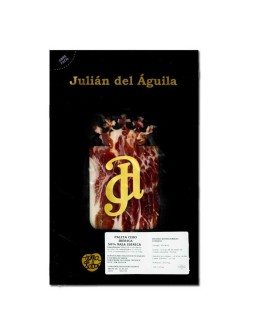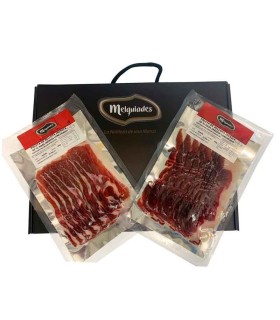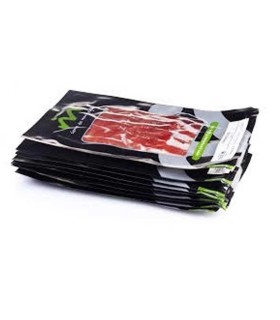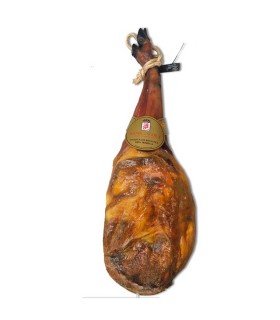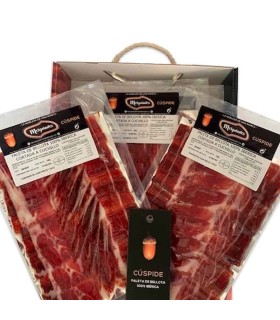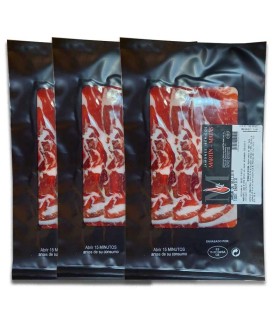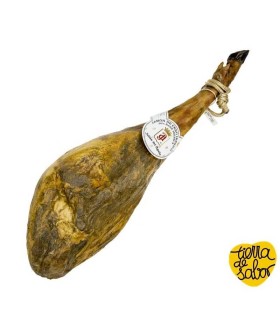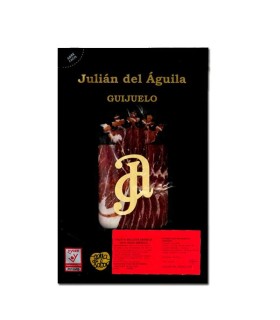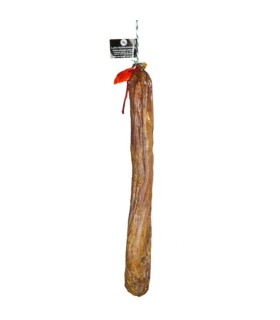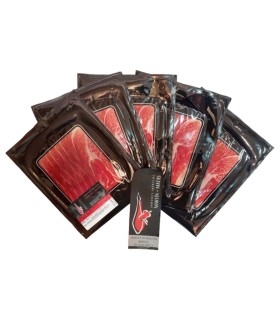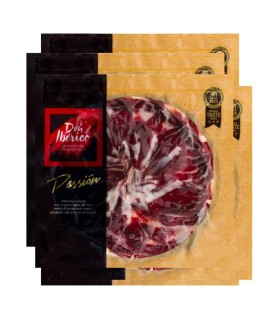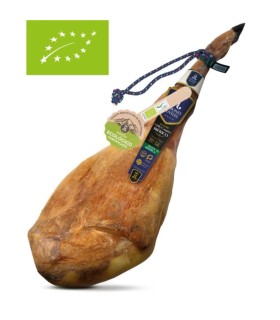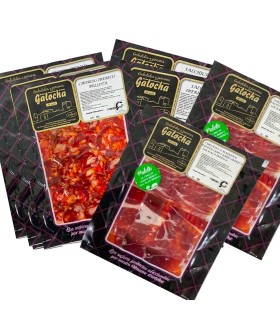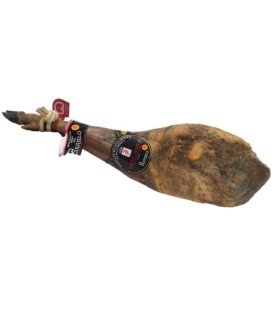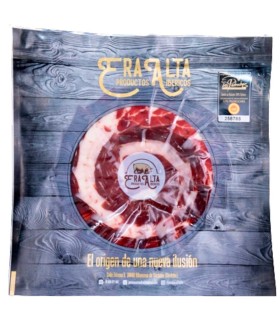Questions, Tips and Curiosities of Iberian ham. Iberian Ham FAQ's
What are the colors of the flanges of Iberian ham and shoulder? Why shouldn't they be removed from the pieces?
The colors of the flange correspond to the 4 qualities of Iberian recognized in the Iberian Standard: Cebo, Cebo Campo, Bellota and Bellota 100% Iberian. Each flange is inviolable and contains a bar code that allows to obtain all the traceability of the piece. It is the ID of the ham. If you remove the bridle / seal from the ham no one will be able to guarantee where it comes from. It's like the label on any garment.
You can find more information in our blog about what are the flanges or labels of Iberian ham
Why can a 100% Iberian acorn-fed ham come out without a grain of fat?
One of the characteristics of the 100% Iberian pig is the lower muscle fat infiltration. For this reason, the meat of 100% Iberian ham will have less grain of fat, with a darker color and much more flavor.
How do I differentiate a ham and a shoulder?
The morphology of one piece and another are very different. The bone of the palette... It is very characteristic. The shoulder comes from the front limbs and the ham from the hind limbs. The shoulder has a weight from about 4kgs to about 6.5kgs while the ham would start at these 6-6.5kgs to 9 and 10kgs.
What are the white dots that appear on Iberian ham, like white spots?
They are crystallizations of an amino acid Tyrosine that is present in animal proteins. They appear as a result of the concentration of these amino acids in the curing of the piece. They are a sign that the process has been slow and long. They are a guarantee of quality. An excess of salt or with a quick cure inhibits the enzymatic activity and will not allow the appearance of these white speckles. They are not bugs.
Is it normal for Iberian ham to have mold on the outside?
Of course, the appearance of molds on the outside of the ham is normal. The healing process involves the expulsion of water from the inside of the muscle to the surface. This process on the surface generates moisture that results in molds. As the product dries, the mold disappears and is also cleaned in the dryer with oil. Some producers leave the product with their mold.
How to keep an Iberian ham or shoulder at home?
There are many theories about conservation once the ham is opened. We tell you pros and cons. 1- Use a slice of the bacon itself. For a rat it will do, but then that bacon is rancid, has moisture and generates mold to the ham in addition to transmitting the rancid flavor. We do not recommend it. 2- Use cling film. Equally from one day to the next it would serve but that plastic generates moisture which will facilitate the appearance of mold. Especially if you are in an area near the sea. 3- Use a cloth. For us the best option. Maybe you can dry it a little, to avoid it you can wet the cloth a little and so the ham does not lose so much moisture. The best recommendation is to consume ham daily. Even if it's a couple of slices. It is the best way to avoid excessive drying of the piece.
What are the additives used in curing Iberian ham and why are they used?
The additives used in cured ham are:
- Nitrites E-250
- Nitrates E-252
- Antioxidant E-301
- Acidity regulator
- Dextrose - sugars
Where to start cutting an Iberian ham?
It depends on how you are going to consume it. If the consumption is going to be fast, it is recommended to start with the mace. If you are going to take longer to consume Iberian ham we would recommend you start with the babilla.
Where to start cutting palette?
It happens like ham. It already depends on how you consume the shoulder. If the consumption is going to be fast, it is recommended to start with the mace. If you are going to take longer to consume Iberian ham we would recommend you start with the babilla.


